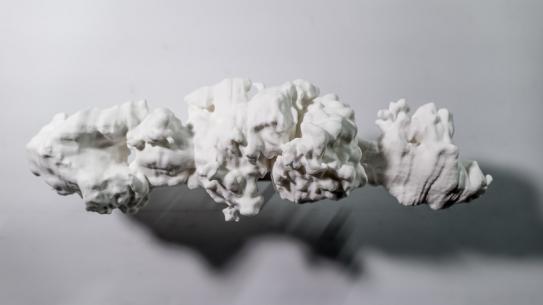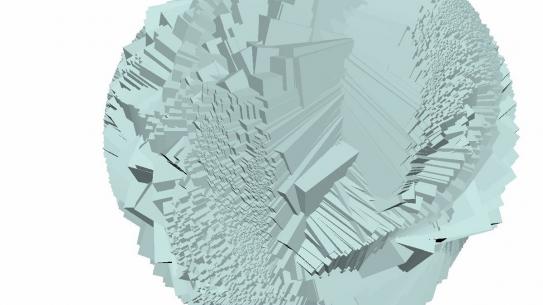Exploring the Intersection of Art and Science

Left to Right: Robert Penzer, Denis Pelli, Enrico Fonda, Dana Karwas, Katepalli Sreenivasan, and Luke DuBois
On June 14, some of NYU Tandon’s most prominent figures, including Dean Katepalli Sreenivasan, gathered at the Helix Center on the Upper East Side of Manhattan to discuss what is widely considered to be the last unsolved problem of classical physics, turbulence; its experimental and technical visualizations; and its many theoretical and philosophical implications. Over the course of a stimulating evening, which also featured an exhibit of artworks that challenged traditional notions of scientific perception, the group pondered new ways of considering complex physical phenomena and affirmed the creativity needed to both produce artworks and engage in scientific discovery.
Dean of NYU Tandon School of Engineering Katepalli Sreenivasan
Science and art are often deemed separate, but really, they are very similar in their sense of beauty and ability to evoke emotion. I’ll mention here the 18th-century mathematician Leonhard Euler, who introduced what is considered the most remarkable and beautiful formula in the world for its display of the profound connection between fundamental numbers and basic operations in mathematics. Consider also the iconic 1829 woodblock print ‘The Great Wave off Kanagawa,’ the repeated lines in the Robert Frost poem ‘Stopping by Woods on a Snowy Evening,’ or the tendrils and vortices that signal physical turbulence. They all manifest beauty in their own way and help create order out of chaos.”

Co-Director of Tandon’s Integrated Digital Media Program R. Luke DuBois
We live in an era of the quantified self; devices are measuring everything from our heart rates to the steps we take. Our simplest interactions are recorded and can add up to self-portraits of sorts. I once created a force-directed graph of email I had sent and received over 20 years. Different people in this universe have different mass and gravity, causing galaxies of attraction to form; those in constant dialogue with one another, or whose language is more familiar, or loving, have stronger bonds of attraction, with the five or so primary e-mail addresses I’ve used over the years appearing in the center and the several thousand other people I’ve corresponded with surrounding them in clusters of sentiment and carbon-copy.”
Tandon Postdoctoral Researcher and Organizer of “Creative Turbulence” Enrico Fonda
I hope events like this will answer the questions of how we can get beyond our traditional, trusted scientific vernacular and how we can find new ways of looking at things we all experience.”

Lecturer of Integrated Digital Media and Artist Dana Karwas
There has long been a dialogue between artists and scientists. In the 19th century, for example, naturalists returning from field explorations would describe specimens they had discovered to hired artists who would then sketch them. Creating ‘Immutable Swell,’ the artwork I have on exhibit today, involved watching and feeling waves in the ocean, using sensors to measure data points that allowed me to see it from a digital distance, and resurrecting its beauty from that data.”
NYU Professor of Psychology and Neural Science Denis Pelli
We will all probably agree about the definition of science and understand that it concerns phenomenon that are subject to testing. We are very likely to disagree, however, as to what constitutes art. The spirit of this roundtable and exhibit hark back to an earlier time, when it was acknowledged that art and science were really not that different.”




